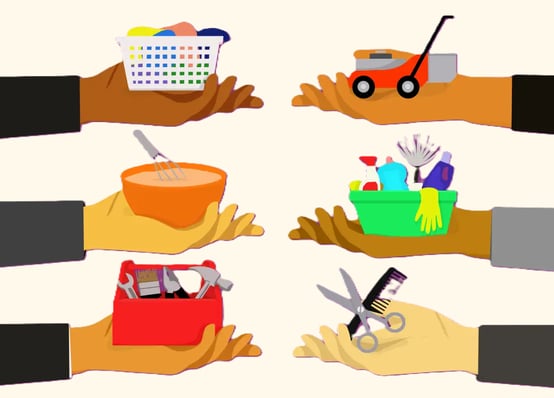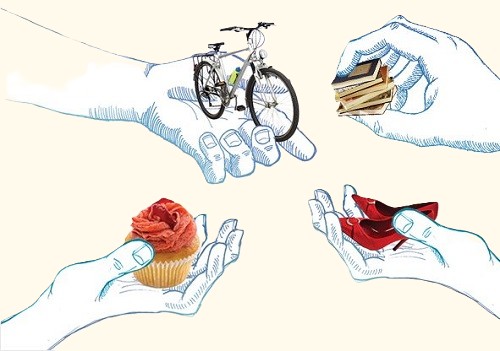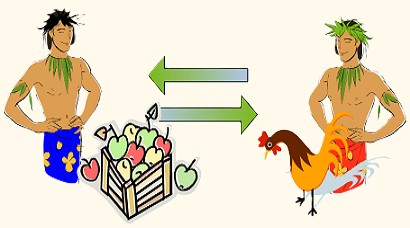Bartering
Establish a barter system for goods and services if money loses value.
PREPARE FOR THE LONG-TERM
12/5/20243 min read
Bartering
Establish a barter system for goods and services if money loses value. Bartering is the direct exchange of goods and services without using money. When a traditional currency loses its value due to economic collapse, war, or hyperinflation, a barter system can ensure access to essential resources.


1. Understanding the Basics of Bartering
A. How It Works
Instead of using cash, individuals trade items or skills directly based on perceived value.
For example:
Exchange a dozen eggs for a loaf of bread.
Trade carpentry services for medical assistance.
B. Types of Goods and Services for Barter
Goods: Food, clothing, tools, seeds, fuel, medical supplies, etc.
Services: Plumbing, carpentry, sewing, healthcare, teaching, or repair skills.
2. Steps to Establish a Barter System
A. Assess Community Needs
Identify essential goods and services people lack.
Determine what surplus items or skills you can offer.
Encourage neighbours or community members to inventory their own supplies and skills.
B. Create a Barter Market or Network
Informal Network: Start by trading with family, friends, and neighbours.
Organized Market:
Host regular bartering events where individuals meet to exchange goods.
Set up a designated location like a park, community hall, or online platform for trades.
Digital Platforms: Use apps or social media groups to connect with potential barter partners locally.
C. Develop a Fair Valuation System
Relative Value: Base value on necessity and availability. Scarce items (e.g., medicine) may have a higher value than plentiful ones (e.g., firewood).
Trade Units: Create a standard unit of measurement, such as “1 unit = 1 loaf of bread,” to simplify trades.
Negotiation: Allow flexibility in trades based on perceived worth.
3. Popular Items for Bartering
A. Essential Goods
Food and Beverages:
Fresh produce, preserved foods, salt, sugar, and coffee.
Tools and Supplies:
Gardening tools, kitchen utensils, batteries, flashlights, and fuel.
Clothing and Textiles:
Sturdy clothing, blankets, and sewing materials.
Medicines and Hygiene Products:
Antibiotics, painkillers, soap, toothpaste, and menstrual products.
B. Survival Resources
Firewood, coal, or gas.
Water purification tablets or filters.
Seeds and farming equipment.
C. Comfort or Luxury Items
Alcohol, tobacco, and chocolate.
Entertainment items like books or board games.
4. Bartering Services
Skilled Labor:
Repair work (plumbing, electrical, carpentry).
Healthcare (nursing, first aid, dentistry).
Education and Training:
Teaching skills (gardening, hunting, first aid).
Tutoring children or adults.
Household Services:
Babysitting, cleaning, or cooking.
Transportation:
Offering rides or transporting goods using a vehicle, bicycle, or horse.
5. Ensuring Fairness and Trust
A. Build Trust
Start bartering with known individuals to establish credibility.
Use community networks or referrals for introductions to new barter partners.
B. Create Agreements
For complex exchanges, write down terms of the barter (e.g., service timelines, quality expectations).
Avoid miscommunication by being clear about the value and condition of traded items.
C. Establish Accountability
Use a trusted mediator or barter group leader to resolve disputes.
Keep records of recurring trades to track obligations and exchanges.
6. Expanding the Barter System
A. Form Barter Groups
Form local cooperatives where members agree to share and trade resources.
Use community bulletin boards or digital tools to post available items/services.
B. Develop Local Currencies
Introduce a community-based currency system for easier transactions (e.g., vouchers, tokens).
Example: 1 token = 1 hour of labour or 1 loaf of bread.
C. Promote Specialization
Encourage individuals to focus on specific skills or resources for efficient trade. For instance:
Farmer grows crops.
Tailor sews clothes.
7. Challenges and Solutions
A. Uneven Trades
Problem: Items or services may not align in value.
Solution: Combine multiple goods/services in one trade or introduce a third party for multi-way trades.
B. Quality Assurance
Problem: Low-quality items may cause disputes.
Solution: Allow inspections before completing trades.
C. Lack of Trust
Problem: Fear of scams or unfair trades.
Solution: Build networks of trusted traders and implement peer reviews.
8. Benefits of a Barter System
Resilience: Provides economic stability when money fails.
Community Building: Strengthens bonds and fosters cooperation.
Sustainability: Encourages the reuse of items and reduces waste.
By implementing a barter system, communities can thrive in challenging situations, ensuring access to vital resources and building networks of mutual support.




